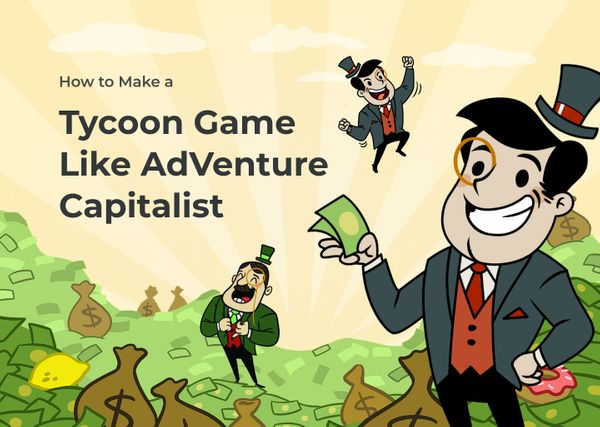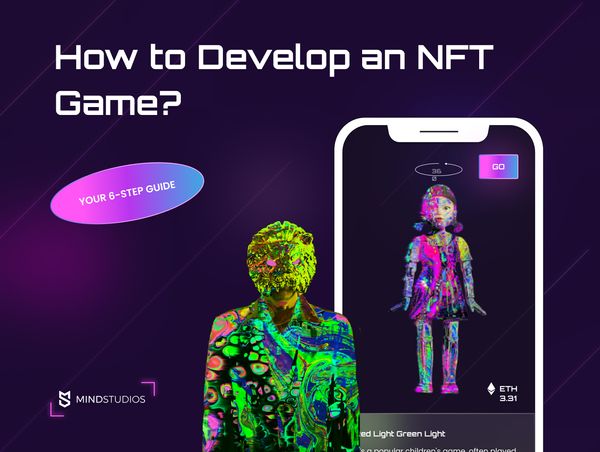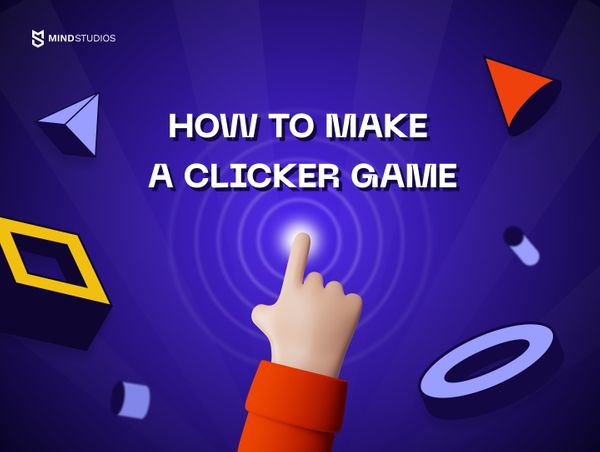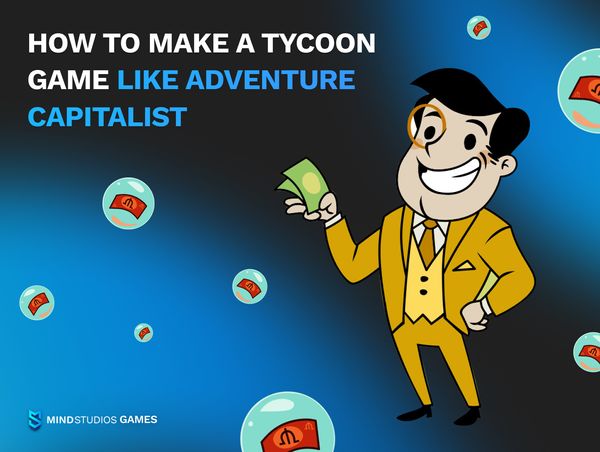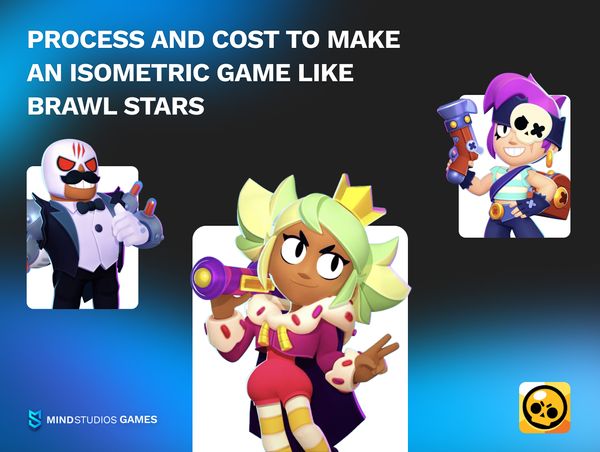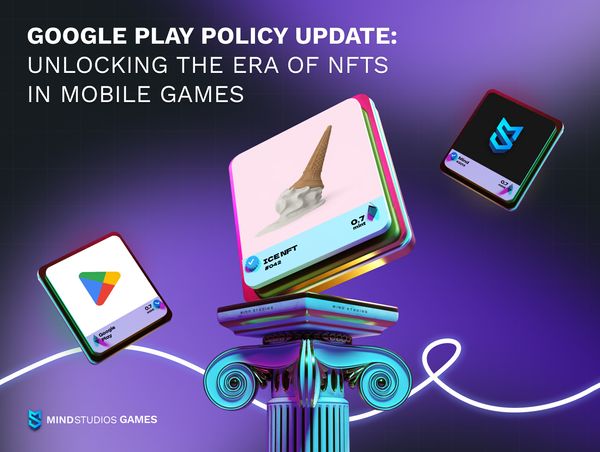In this article, we offer advice on how to make a hyper casual game and monetize it successfully.
Hyper casual games are in trend. According to SensorTower, from 2017 to 2018, hyper casual game development company Voodoo moved from twenty-fifth to third on the list of the world’s leading companies by app downloads. With nearly a billion downloads, Voodoo only lost to Facebook and Google. Its Helix Jump game has been domineering both the Apple App Store and Google Play Store.
Trends come and go, though, and one should strike while the iron’s hot. Now is the time to make your own hyper casual game. Want to know how to create hyper casual games as popular as Voodoo’s? Here’s a short-ish breakdown of the topic.
What are hyper casual games?
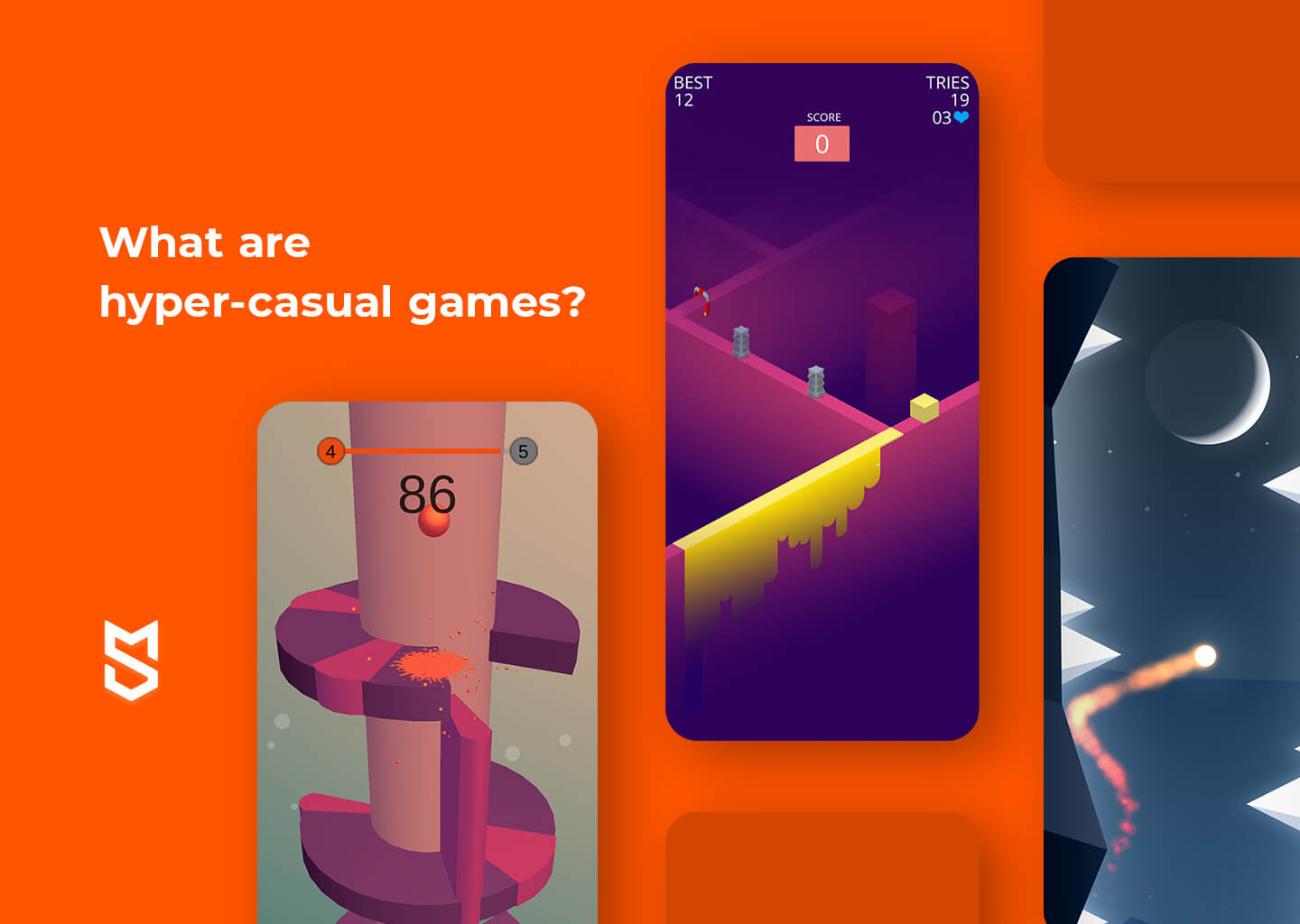
There used to be three major categories of mobile games, according to Johannes Heinze, the inventor of the term “hyper-casual”: casual, mid-core, and hardcore. These terms partially correspond to categories of gamers, the most dedicated of which — hardcore gamers — spend huge amounts of money on games.
One way to distinguish between these three categories of mobile games is by their target audience. Casual games target the mass market. They’re simple, straightforward, and usually have some kind of freemium monetization model. Hardcore games, on the other hand, rely on a smaller but more committed audience that makes more in-app purchases and pays to download. Mid-core games are, as the name suggests, somewhere in between.
But if casual games are the simplest, then what are hyper-casual games?
Hyper casual games add another level of simplicity even compared to casual. Hyper casual games:
- usually have a single mechanic, short game loops, a minimalistic UI, and a simple yet beautiful design
- provide satisfaction by making it easy to earn high scores
- are lightweight, taking up very little space on a phone
- don’t always require a tutorial
- start right away, typically within seconds
- are designed to be played in short sessions but require an intense level of focus during those sessions
- offer few or no in-app purchases
If you are intrested in hyper casual game development, you can always contact our team for a free consultation.
Hyper casual game ideas
Hyper-casual genre is basically limitless. Being traditionally simple in both design and core loop, it might seem limiting in variability, but in reality, the hyper-casual genre offers a multitude of directions for various combinations and improvements.
At the same time, the popularity of the genre in the latest years was so high that coming up with innovative ideas for hyper-casual games is getting tricky. You wouldn’t want to be labeled “secondary” for building too close a copy of a game that launched earlier, after all.
Here are some ideas for your brainstorming:
- Coming up with a mechanic that hasn’t been used for hyper-casual games yet
- Combining a popular mechanic with an unusual setting
- Putting an unusual mechanic into a popular sub-genre (i.e. racing game with collecting mechanic)
- Combining two or more popular elements in an innovative way (but be mindful to not overcomplicate things)
- Taking a popular concept or mechanic to new heights (like Voodoo did by adding jumping mechanics and moving targets to a popular shooting concept)
These are just some ideas off the top of the head. The best idea to come up with cool ideas for hyper-casual games is always to sit down with your team for a brainstorming session or few.
Hyper casual game design
Hyper casual games are known for their clean and simple visuals. You won’t find extremely detailed characters or backgrounds here. Most hyper-casual games use basic geometry and lines. Design solutions like this make focusing easier, and the player’s focus is of the utmost importance in hyper casual games.
In addition to simplified visuals, hyper casual games have very limited mechanics. Most hyper casuals are focused on a single mechanic. Though some have two, it’s rare to see more than that. At the same time, the range of game mechanics to choose from is quite large, which differentiates hyper casual games from idle clickers.
Therefore, when thinking about the hyper casual game design in particular, it is usually recommended that the design be simple and uncomplicated, but at the same time responsive and understandable. If you’re interested, we also have an article about how to make an idle clicker game.
Features of Hyper Casual Games
In this section, we will talk a bit more about what makes hyper-casual games, well, hyper casual, and how to understand whether your plan is to develop a casual game or a hyper-casual one.
We’ve mentioned the list of features at the beginning of this article, and now let us elaborate on it.
Simplicity at the heart of the game
Hyper-casual games are as simple as it gets. Similarly to idle games, they don’t have intricate plots or dialogs. In most cases, there’s no plot whatsoever. The goal of the game is to repeat simple actions, worrying only about the immediate/quick result.
Even the graphics aren’t supposed to distract players from the actions, which is why in hyper-casual games, they’re usually very basic: geometrical shapes, stick men, or vaguely humanoid figures distinguished by color or a simple clothing element.
Minimum mechanics + maximum focus
Hyper-casual games rarely need a tutorial precisely because they tend to have a limited number of mechanics — usually one or two. At the same time, the mechanics are usually chosen to require intense focus to win the short round. This approach makes hyper-casual games so addictive: players have an immediate feeling of accomplishment that’s the result of their actual effort.
The low number and the simplicity of mechanics allow hyper-casual games to start instantly, without much loading or a need for a tutorial, and to be repeatable but not bore players into leaving.
Few or no IAPs
The monetization of hyper-casual games rarely is based on in-app purchases. This is because such games don’t usually have boosts or other tools to significantly strengthen the player. The monetization model used in hyper-casual games the most is ads, which can be used between game rounds, as rewards, or, in case of banner ads, placed in a small part of the screen.
Mechanics for hyper casual games
When wondering how to make hyper casual games, deciding on mechanics is the most important thing. What choices do you have when it comes to hyper casual game mechanics? Basically, any mechanics that can be used in games in general can be used in hyper-casual games.
-
Rising/falling mechanics
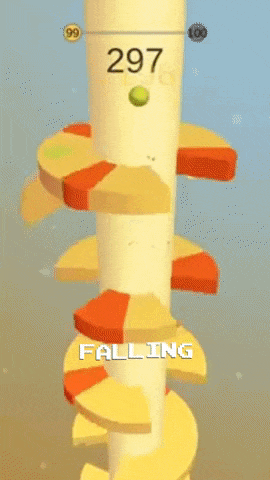
In Helio Jump, you have a bouncing ball that falls through levels in a helix tower. Levels have openings and differently colored floors as obstacles. The player’s goal is to pass through as many openings as they can and break obstacles of a certain color while avoiding obstacles of different colors that can break the ball. As the levels increase, the openings get smaller and the obstacles to avoid grow larger.
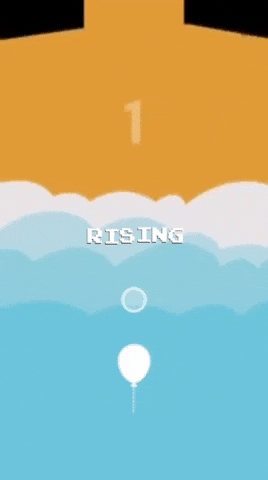
An example of rising mechanics is Rise Up from Serkan Özyılmaz. In this game, you get to protect a floating balloon from different types of obstacles. The obstacles change with levels, keeping players engaged.
-
Tap/timing mechanics
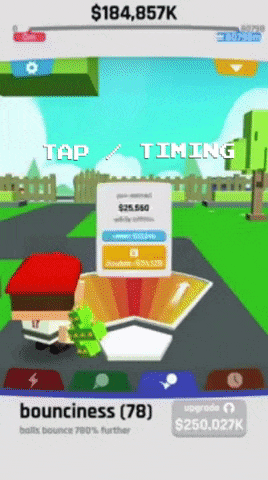
Games that have tap/timing mechanics are the most widespread. They’re also those that most resemble 1970s arcade games, believed to be the inspiration behind today’s mobile hyper casual games. In tap/timing games, you need to tap the screen at precisely the right moment for the best result. Usually, the result is throwing something or hitting an object to send it flying as far as possible. Sometimes, there’s a second mechanic that allows you to control the direction of movement. Voodoo’s Baseball Boy! is an excellent example of tap/timing mechanics, but there are also games where you can launch a hedgehog into space, for example.
-
Dexterity mechanics
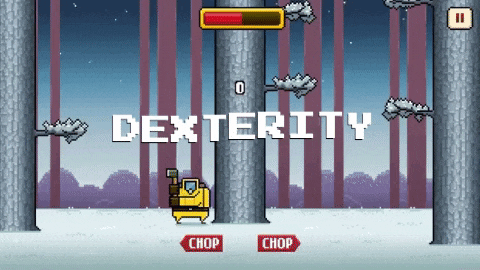
Dexterity is the skill of using one’s hands. Dexterity mechanics employ this skill to complete tasks. In Timberman, players chop trees at an increasing speed and need to quickly tap one side of the screen or the other depending on where the branch threatening the timberman’s life is. Dexterity is a subcategory of tap/timing mechanics.
-
Merging mechanics
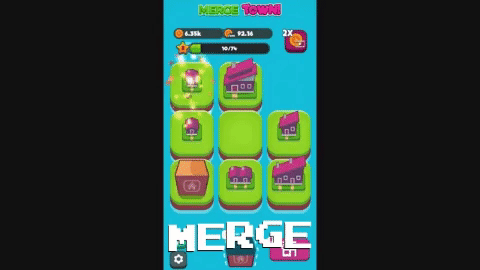
The popularity of merging mechanics is fueled by their ability to provide the greatest satisfaction with progress. Merging is a mechanic that’s simple to grasp, since it’s visualized. Players look for similar objects, merge them together, and receive a new, upgraded object as a result. They clearly see what’s changed and by how much. Merging hyper-casual games heavily rely on beautiful graphics — it’s their primary selling point.
-
Stacking mechanics
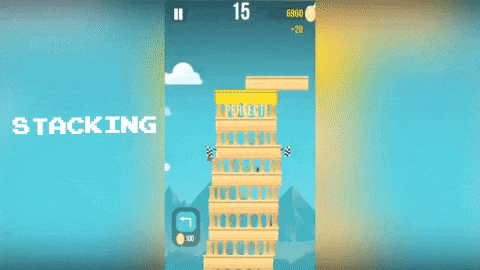
Stacking is another sub-mechanic of the tap/timing type. Instead of throwing objects (which can be an exceptionally satisfying activity, by the way), a player stacks objects on top of each other. The trick is to do this carefully so that the whole stack doesn’t collapse. Usually, this mechanic is employed in games where users build something: skyscrapers, towers, emoji faces, etc.
-
Turning mechanics
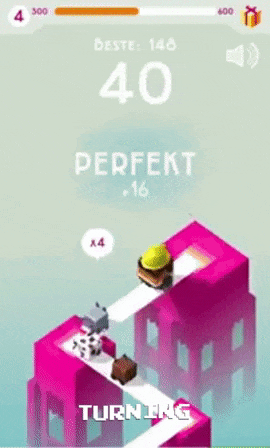
Another subset of tap/timing mechanics, turning mechanics are probably the hardest for users to get a grasp of. Games involving turning mechanics are designed with 3D graphics, and the main challenge they pose is in the seemingly warped perspective.
Have you ever tried to gauge the length or height of an object or a person by sight and got it wrong? Maybe you’ve been tricked by optical illusions. That’s what a turning mechanic is about. Our eyes aren’t too good at estimating length in three-dimensional space, even less so if the object is moving. However, we’re not so bad at it as to make hyper casual games boring. It just takes more time for a player’s eyes to get used to these mechanics. And isn’t that fun?
-
Growing mechanics
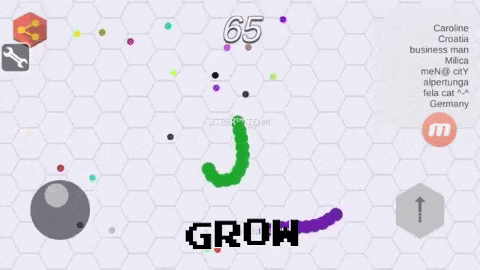
At the beginning of the twenty-first century, before the first iPhone, when no smartphones with touchscreens existed — well, not in the mass market, at least — one of the first games adapted for mobile phones was Snake. A player started with a dot that moved around the screen of their Nokia 3310 and tried to gather other dots one by one, forming a snake-like line. The trick was to get as many dots as one could without hitting either “walls” (screen edges) or the snake’s own tail. That’s the gist of growing mechanics for you.
Today, dozens of Snake clones exist, but you can grow all sorts of other things too, from geometric shapes to color splashes of undetermined shapes. Some of these games are even multiplayer.
-
Swerve mechanics
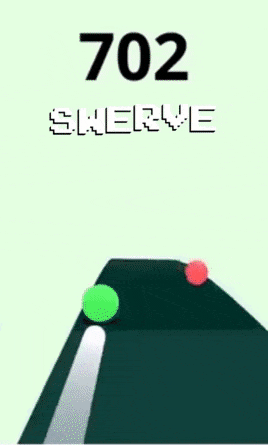
The last type of mechanics for hyper casual game development are swerve mechanics. Swerve mechanics differ from all others in that they rely not on timing and tapping precision but on how accurately the user can navigate their smartphone screen with their finger. Basically, you move an object to gather game currency or rewards to up your score and avoid obstacles that cut your score. This mechanic can be used in racing games if we’re talking about something more difficult than hyper-casuals.
The simplicity of a single mechanic and unburdened visuals makes hyper casual games lightweight and easy to master and eliminates the need for tutorials — players can grasp the mechanic instantly. The biggest challenge of hyper-casual game design is to calculate the speed at which new levels appear. If the game speeds up too early, players might find it too hard to master. On the other hand, too slow of progress makes a game boring. It’s important to find balance while creating hyper casual games.
How to monetize hyper casual games

If you check out hyper casual games in any app store, you’ll see that they’re generally free to play and many of them don’t even sport the “In-app purchases” label. So how do they make money?
In-app purchases are usually offered in games that attract hardcore players. Hardcore games have a high conversion rate, meaning a large number of players who either regularly or occasionally make in-app purchases (IAPs). Revenue from these purchases covers the development and support costs, even allowing for non-paying players.
Monetizing hyper-casuals with IAPs rarely works well since casual gamers don’t convert to paying customers all that much. The primary business model for hyper casual game developers is ads: banners, video ads, and the option to turn off these ads.
If developed and marketed well, hyper-casual games attract massive numbers of casual players. The decent hyper-casual game design will produce high retention — even if playing sessions are short, users continue to come back to play every spare minute they have. Hyper casual games set retention as a priority instead of conversion. Besides, ads provide more immediate revenue than IAPs.
How to make a hyper casual mobile game

What else do you need to pay attention to while making hyper casual games?
Visuals
As we’ve already mentioned — several times, because it’s important and we can’t stress it enough — one of the hallmarks of hyper casual games is the simplicity of both the game design and visuals. However, simple doesn’t mean you can just throw in anything that comes to mind. In game design, simplicity is the heart of sophistication. Meaning that the art of your game must be beautiful even if it’s simple. Otherwise, no one will look twice at it. That’s just how the gaming industry works.
At the beginning of the game design stage, you’ll need to discuss with the team what kind of visuals you need. Then graphic designers will offer mock-ups for you to choose from. Only when the visuals are agreed upon can the development stage start.
Tech
Most mobile games today are built with the Unity engine. That includes hyper-casuals. The biggest selling point of Unreal Engine — the other popular game engine — is its superb 3D development features, but Unity isn’t too far behind in this department. For a hyper casual game, it’s more than enough.
At the same time, Unity requires far less processing power than Unreal Engine and still offers more than decent 2D and 3D graphics and plenty of development features. Writing code in either Unreal Engine or Unity will allow you to create games for Android as well as for iOS devices, but Unity-made games will be lighter and, hence, will work more smoothly even on smartphones without high-end processors.
Then there’s the backend. The backend, or server part, isn’t always necessary for hyper-casual games, just as it isn’t always necessary for idle games. These types are lightweight enough to store everything either on the user’s device or in the cloud. But that depends on the features you decide to include in your game, of course. Push notifications, in-app purchases, and sharing progress on social networks aren’t necessary features. But if you do want to add some bells and whistles, a backend may be required.
If you want to create hyper-casual games without coding, you'll be pleased to know that it's possible — there are game builders that offer such an option. But the quality of a gaming application made with a third-party builder is likely to be very low level. Therefore, if you want a quality game, it is worth doing it using a deep technical approach.
Marketing

Marketing is a huge part of creating hyper casual games successfully. It’s important to hit the masses: if you don’t, the revenue might not cover the investment in development.
Voodoo owes a major part of their success to strong marketing. (Another part is that they have not one and not two but many hyper-casual games and can cross-advertise them. But that’s more of a long-shot goal if you’re making your first game.)
In the case of hyper-casual games, the most important markers to monitor are day 1 through day 7 retention. If it shows less than 35% retention over this time, something might be wrong.
One of the pros of working with a game development company instead of independent developers is that a full-sized company can help you analyze market trends, decide on a monetization strategy, and come up with a marketing plan.
How much does it cost to develop a hyper casual game?
It’s tricky to estimate the cost of hyper casual game development — it depends on too many factors, from the number of features to the complexity of the graphics. However, the cost to make a hyper casual game is within the lower range for games.
With simplicity at the core, both in terms of visuals and mechanics, you won’t need too many people working on your game:
- Game designer: 1
- 2D or 3D designer: 1
- UI designer: 1
- Sound designer: 1
- Unity developer: 1
The time needed to make a hyper casual game in Unity is also not too long — about 1–2 months. Keeping these two factors in mind, we’d say it’s possible to fit your game development costs within $10,000. If you decide to add some extras, it will increase both the time and cost.
Hyper Casual Game Trends
Rapid popularity growth of hyper-casual games was, in part, the result of their novelty. And novelty inspires evolution. Which is why it’s little surprise that trends for hyper casual games spring up like mushrooms. Here are some examples we’re seeing for 2023 and beyond.
Genre mixers
If you check out trending hyper-casual titles in app stores you’ll notice that many titles there don’t exactly match the style the genre started as. There are quite a number of games that mix hyper-casual style with idle management mechanics, casual arcade games, IO games, and more.
TikTok is inspiring hyper casual trends
For hyper-casual games, TikTok is not only a huge marketing channel, but also a source of inspiration. Game developers are inspired by short video format to turn viral videos into hyper-casual games — after all, the concepts overlap quite a bit! Many a viral TikTok video is short, entertaining, can be played on repeat without getting boring, and doesn’t require any specific knowledge to understand it.
AR and VR
Virtual reality and artificial intelligence are both big trends in software development these days, and incorporating them into hyper-casual games isn’t as long a shot as it might seem. Such technology can make your game more realistic and immersive without taking out the essential hyper-casual elements.
(They can, however, be rather costly.)
AI and ML
We at Mind Studios Games are already incorporating elements of artificial intelligence into our creations. So far, this trend has only started getting traction in hyper-casual game development specifically, but seeing the benefits it brings, we believe it’s here to stay.
Conclusion
Competing with mobile game industry leaders like Voodoo is tough. However, the good thing about the hyper-casual genre is that with lightweight and simple games, the competition between developers is way less scary than among hardcore game creators. The latter sometimes have to fight for every user.
Hyper-casual games happily coexist: a gamer can play a variety of hyper-casuals, each for different moods and different amounts of free time. And no one will suffer much loss in revenue as long as users come back. Casually.
If you’re planning to create hyper casual games using Unity or you have any questions about hyper casual games, get in touch with us. We have a strong outsource mobile game development department that will be happy to answer any and all of your questions and help with development.

